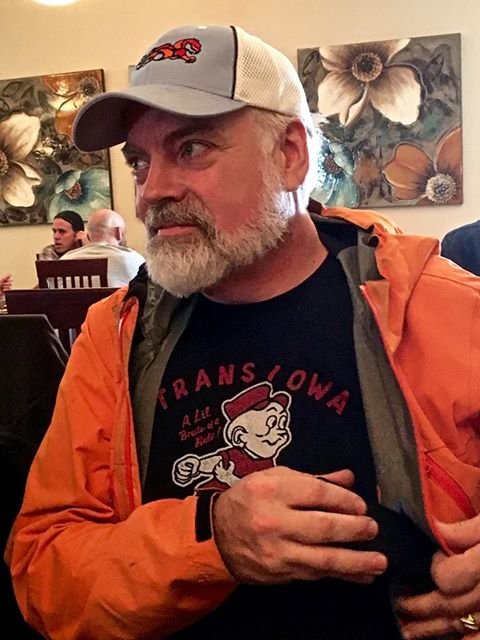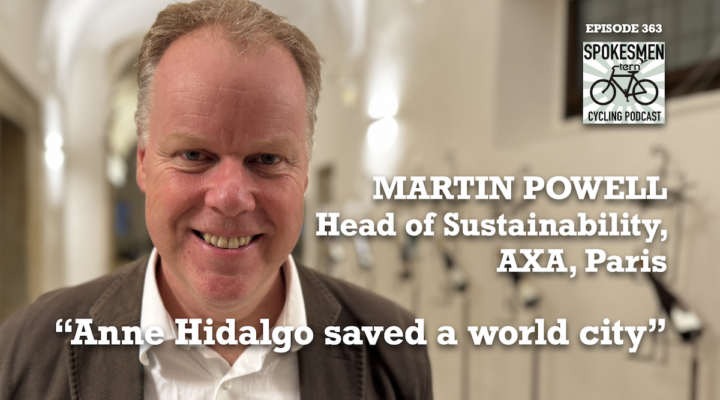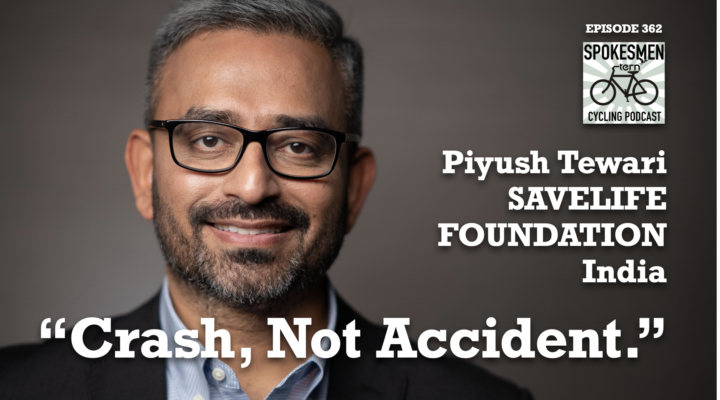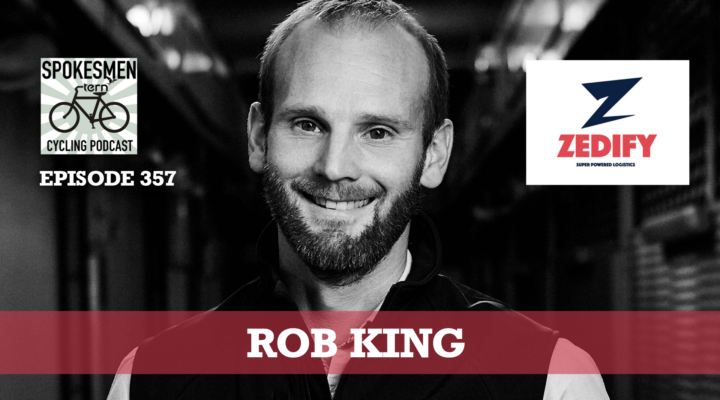11th January 2022
The Spokesmen Cycling Podcast
EPISODE 290: Launch of Gravel Cycling Hall of Fame with Guitar Ted
SPONSOR: Jenson USA
HOST: Carlton Reid
GUEST: Mark Stevenson aka Guitar Ted of RidingGravel.com
TOPICS: Today’s Gravel Cycling Hall of Fame launch, and more.

TRANSCRIPT:
Carlton Reid 0:14
Welcome to Episode 290 of the Spokesmen cycling podcast. This show was recorded on Tuesday 11th of January 2022.
David Bernstein 0:25
The Spokesmen cycling roundtable podcast is brought to you by Jenson, USA Jenson USA where you will find a great selection of products at unbeatable prices with unparalleled customer service. Check them out at Jensonusa.com/thespokesmen. Hey everybody, it’s David from the Fredcast. And of course, I’m one of the hosts and producers of The Spokesmen cycling roundtable podcast since 2006. For shownotes links and other information, check out our website at the-spokesmen.com. And now, here’s my fellow host and producer Carlton Reid and the Spokesmen.
Carlton Reid 1:10
Thanks, David. And on today’s show, I’m talking with Mark Stevenson of ridinggravel.com. He tweets and blogs as Guitar Ted and on one of his tweets earlier today he mentioned that some folks across there in America have created the gravel riding hall of fame. Now, to those who know about the history of gravel grinding, Guitar, Ted is one of the key figures from the early days. So here’s hoping he gets to be one of the first inductees. Here’s our 45 minute chat from earlier today. First of all, Guitar Ted, or Mark, what we’re doing today, Guitar Ted, Mark, Guitar Ted, Mark?
Mark Stevenson 1:57
Would probably be easier just to go with Mark.
Carlton Reid 2:01
Tell me first of all, I know I’ve asked you this before because you have been on the show before you’ve been on the show quite a few times. I went back and I found you 2007 was the first time you were on the show. So you’re a long time show participant. But haven’t had you on since 2018. However, but you have been on the show before. So I know to have asked you this before but Guitar Ted, why?
Mark Stevenson 2:26
Well, when I was younger, and I listened to rock and roll music, and like most of my peers, and my father was very much you must buy American and because he worked in a factory and all that. Well, much of the rock’n’roll that I listened to at the time was not made in America. So I became attracted. This is back in the 70s to the music of Ted Nugent. So and I saw I listened to in high school. So my friend started calling me Ted head, because that’s all I listened to. And then that guitar Ted thing kind of grew out of that, because I played guitar as well and still do. So that’s where that came from.
Carlton Reid 3:10
Okay, and that you are refreshing my memory because I now remember that. But for anybody new who’s coming to the show, and of course, I would expect them to go back and listen to the back episodes and listen to when you want, etc. And so to talking about that, and that this is what we’re gonna talk about today. You were on because the guitar Ted that we all know and love is absolutely not just embedded in the gravel scene, but I would certainly say was one of the core people right back there. Early 2000s on the gravel scene, so that is why we had you on the show to begin with because you were at Interbike and you were there to do gravel bike stuff for a bike shop for yourself. What are you doing when we when we met back in 2007 at Interbike
Mark Stevenson 4:00
in 2007, Carlton, I probably would have been doing stuff for 29inches.com, which was the site that covered the then still quite new 29 inch wheeled mountain bikes. I was kind of pivoting into more gravelly things as you say, at the time and I had a you know, a blog site that covered that kind of thing as well. And then eventually I phased out of the mountain bike stuff and phased into more gravelly things and so now I’m actually part owner of riding gravel calm a site that covers the gravel theme.
Carlton Reid 4:36
Hmm. Now that has come to dominate the world of bikes and I don’t have to really go back to the transcripts for those early shows to realise that we were probably taking the mick we are probably like pulling your leg quite a bit about how this is just you know, the same old same old and it’s just the bike industry. You know, marketing this, this this bike to There are more bikes. But it has come to be an absolutely massive category. And when I look at a road bike, I don’t in fact, I don’t look at a road bike anymore. I think, well, I want to grab a bike for current riding, I want to do sure I want to, I want to mix it up. So that category, which you have very, very early on, has pretty much taken over the world, hasn’t it?
Mark Stevenson 5:23
It seems to have, you know, you bring up a great point, Carlton. Originally, when I was looking at this sort of thing, back in the late 2000s. My idea was that the road racing bike that you would find in most bicycle shops at the time, was the wrong kind of road bike. It really was geared so much towards the racing side of the spectrum that it left out a lot of the versatility that I thought that would make a road bike more appealing to the average cyclist. And I felt that the gravel bike, so called, was the perfect vehicle to bring back the versatility to bring back the appeal of the road bike to a wider audience. And I never really thought that the term gravel bike was the right way to name these bikes. But that’s what it has become. So that’s what it is.
Carlton Reid 6:17
It kind of stuck. It kind of end. And those that’s kind of because you said an Iowa. Yes. That’s where you are. So we’re about to you in Iowa right now.
Mark Stevenson 6:28
I mean, in Waterloo, Iowa, which is the home of John Deere tractors, if I suppose some people might know about that. It’s the northeastern part of the state smack dab in the middle United States, in farm country.
Carlton Reid 6:42
I guess for here in the UK, we kind of go on to almost tracks, you know, like forestry tracks. That’s where you do your gravel riding probably. Whereas I know, a tonne of states across there. And I’m presuming Iowa as well. Your road network, you know, is it is a huge part is actually gravel. You know, this is this is why there’s such good bikes where you are and in many states because you know, huge mileage is can be done on genuinely on on gravel unmade roads basically.
Mark Stevenson 7:18
Absolutely, yes. And part of that stems back to history. Back into the 70s, late teens, late 1700s, when the United States was first getting started, there was a an act of Congress called the Northwest Territories act, I believe it was called. Anyway, it set out the way that America was going to colonise the North American continent going forward. And part of that was to grid out the states and counties and townships, with roads so that the land could be accessed in by farmers and by to soil out for schools and towns and whatnot. And so that philosophy pretty much was imprinted onto the landscape of the United States early on, and therefore we have all these mileage is that you spoke of. So for instance, in Iowa, we have upwards of about 70,000 miles of dirt and gravel roads, whereas the paved part is only about 46,000 or so.
Carlton Reid 8:23
Huh? So you’ve got a whole tonne of choice there. Absolutely fit, you can go on tarmac on asphalt. But you wanted to utilise these roads which are not being utilised because it kind of tough you can do on a road bike, a standard road bike, but it just wasn’t as good. So how did you? What do you do to those first bikes to change them into gravel bikes before the industry started doing it?
Mark Stevenson 8:49
Oh, yes, well, there were there was a thing called a cyclocross bike, as you know, and are familiar with their that allowed for a little bit larger volume tire. Of course, the UCI mandates a 33 millimetre tire, but a lot of these bikes will take a larger tire than that. And so we use those we used mountain bikes, we use pretty much whatever bike we could get our hands on that was comfortable and in good order and could take a wider tire. So you would see all sorts of bikes out there in the early days.
Carlton Reid 9:20
And have they evolved? Have they evolved as much as you thought they might have done it or they evolved even more than you thought? Have they done? How’s the industry done with this baby of yours?
Mark Stevenson 9:32
Well, I think that overall, if you look at it from a wide angle view, I think that it’s done a wonderful job with it. Most of these bikes are can be quite racy, even on pavement. In then they’re also adept at the unpaved parts as well. So that was kind of my overarching vision back then, and I think the industry has done a very good job of translating my ideas. and others into that what we see today, but there are some things that do surprise as you know, as you know, in the bike industry, there’s always the outliers. And that’s strange little things that happen. So there’s full suspension, gravel bikes, there’s gravel or gravel bikes with, you know, electric motors in them. I never dreamed that would happen. So there’s there’s definitely some things that are that are unusual that grew out of this.
Carlton Reid 10:27
Hmm, yes, I’ve had a wee while I had a Canyon electric gravel bike.
Mark Stevenson 10:34
Oh, how did you like that? A whole lot of fun?
Carlton Reid 10:36
Yeah, it was good, you liked it, I enjoyed it. I’ve got to admit, I do like the sweat aspect, and the real grunge aspect of gravel riding. So I probably would prefer not to have an electric bike for that particular mode. So I can see it much more. I picked off me for like a transport by rather than that there’s a gravel bike, however, each each to his own everyone. Everybody wants to do their own thing, which is absolutely fine. So there’s a whole bunch of events that that really took this scene and and exploded it like the early days of mountain biking, I guess, with you know, the Repack? Yeah. What what would be equivalent of to the repack in in gravel terms?
Mark Stevenson 11:31
Well, we can, we can probably point to a lot of early events that existed. But did they have this sort of influence that a repack had, for instance. So, you know, there were people riding on mountains, with bicycles before repack, and maybe they were doing their own little events, but we really don’t know that. Because it didn’t start the dominoes to fall, so to speak. So I’m not going to sit here and tell you that the events I’m going to mention were the very beginnings of gravel scene because there are other events. But, you know, I was involved with a fellow by the name of Jeff Kirkove who’s still in the bicycle industry as an employee of Ergon, I believe. And he and I started an event called Trans Iowa. Kind of an outgrowth of what Jeff had been doing it a time, which was individual 24 hour mountain bike events. And his vision was to cross the state of Iowa on gravel roads, on mountain bikes, and do it in a sort of, is a outgrowth of some of the ultra mountain bike events that were happening at that time, like the Great Divide race and others of that ilk. So we did it on gravel. And that perked up a lot of interest, because we kind of did it at a very opportune time in history. So a lot of people were just getting online and joining forums and finding out about things that they’d never knew about before. And here, we put this thing out about trans Iowa in 2004, late 2004. And it caught the attention of a lot of people. And we were contacted about how we did this, what was this about This looks exciting? Can we do things like this ourselves? And so we disseminated that information, some people that came to our event actually went out and started their own, like events to ours. And it kind of started the ball rolling, and it was like, you know, taking a little snowball on the top of a mountain and watching it go down. And the next thing, you know, is an avalanche. And, and, you know, probably 6, 7, 8 years later, there were so many events, we couldn’t count them anymore. And of course, not all of those were a direct outgrowth of Trans Iowa. But, you know, the early ones were definitely we shared our rules a lot of people and, and are the ways we did things with a lot of people. And I’m sure that what we did was a great influence on that on those kinds of things. So yeah.
Carlton Reid 14:02
And where geographically where where was it all clustered? Or was it clustered at all? Was it was it maybe a bit like mountain biking, which we tried a few different spawning points, and then they kind of met together a few years later, and perhaps even know that they were working on these things? Or where did it geographically gestate?
Mark Stevenson 14:23
I would, I would say, Carlton that it just stated mostly in the Midwest of the United States. So the states that are if you took a map of the United States and cut the middle third out, that’s probably the the heart or the the womb of travel. Right? You will, and then it grew from there. I mean, it didn’t take very long and there were people in Florida doing it and there are people in Southern California doing it and I’ve got contacted by folks in Australia and folks in in the UK that were interested in it too. So it didn’t take long for it to to get going and Different parts of the world but for sure, for sure the vast majority of events in the early days were in the Midwest.
Carlton Reid 15:07
How soon did the bike industry latch on to this co-opted? And do you think they did it cynically? Do you think you know, because they famously quiver bikes, and you’ve got to have like, you know, your next bike. So this is just the cynic would say, Well, this is just an opportunity to just create another bike that you’ve got to go out and buy. So how cynically, should we view this? Or should we view this as No, this was pristine territory, and the bike nerds got into this because they they loved it, and that it kind of grew from that way. So So give us a bit of a flavour of the industry and meeting gravel riding.
Mark Stevenson 15:48
Okay, well, I think a lot of the industry influence and interest grew out of the early gravel events that some of the industry people were attending. For instance, there were a number of people that worked for Quality Bicycle Products, which is based in Minneapolis, Minnesota, that did a lot of the early gravel events. And some of those folks were starting to think what kind of a bike could we made that would do this better. And then eventually, Salsa cycle started testing those kinds of bikes at different gravel events in the Midwest. And they were, to my knowledge, the first ones to market a gravel specific bike in 2012, I believe that was, and certainly there was an outcry of, oh, yes, you are just trying to make us buy another IQ. You know, there was a lot of cynicism around it, you’re, you’re very correct in pointing that out. But and a lot of people thought, well, it’s just a cyclocross bike. And so there was a lot of going back and forth until things, you know, shook out once these people started riding on gravel in different places and back roads in different places, they realise that, you know, like I mentioned before, it’s a road bike with greater capabilities. And I think a lot of people were offended by the term gravel and gravel grinding and thought that that was a trigger to the cynicism. And I believe that’s probably correct. If it had been called an all road bike or something of that nature, I think it would have been better accepted off the bat. But be that as it may, the industry started to finally jump on board with the gravel bikes, I would say probably 2014 2015 was about that point, when you started seeing companies actually, besides salsa actually starting to market that kind of a bike. And then five years later, well, if you don’t have one of those in your line, it’s crazy.
Carlton Reid 17:47
So it wasn’t just you know, the next year, it wasn’t 2018 There was still a few years. People are chewing this over. Yeah.
Mark Stevenson 17:55
Oh, yes. You know, when we started Trans Iowa, the first one was 2005. And so I would, you know, there was a good seven year period without any gravel bikes there. And by that time, there were lots of events. And as I mentioned, before, people were using whatever they could get their hands on, that would take a bigger tire. So we would see mountain bikes, full suspension, mountain bikes, even, we would see cyclocross bikes, we would see older rode bikes that took bigger tires, you know, back in the day that rode bikes did take better tires, and so that we would see some a fair amount of older road bikes on the gravel roads back in the
Carlton Reid 18:30
day, a long way back. We’re talking now we’re talking like, you know, pre 70s and pre 60s, pre 50s. A long, long with is that, is that what you’re talking about? Like the original, like road bikes? Like, Tour de France, you know, 1905 road bike is that we’re talking about?
Mark Stevenson 18:46
Sure. Yeah, I mean, that’s, you know, what we did in the, in the 2000s, with the bike cyclical industry did in the 20 teens, was pretty much modernised that idea of the road bike that existed in the early 20th century. Really, I that’s what I believe, you know, with better materials, a little bit of the Tweak of the geometry here and there. But you know, with those big volume plus tires, and you know, with an aim at going anywhere on that bike. And as I tell people often I believe a gravel bike is the kind of bike you use anywhere between full on crit racing, all the way up to mountain biking and everything in between there is what what a gravel bike is for. So if you can find that path or that road, that’s what a gravel bike can do. And it doesn’t have to be paved, but it could be and I think that the industry kind of, I don’t think they consciously did it, but I think that’s what they did is they they modernise that old road racing bike.
Carlton Reid 19:53
And the did seem to be, there’s two strands here in that in my garage. It’s actually my wife’s bike, but it’s a It’s a it’s an old road bike. It’s a custom built, it wasn’t custom built for her, but he just bought it off somebody 30 years ago. But that’s got 19 millimetre tyres. Oh, yes. Punishing man is so close to the frame is because there’s a huge trend in in cycling 70s and 80s of just going, the smaller the tyres that you know, the faster you’re going to go. And then there was all sorts of journals and boffins coming up with studies saying actually, it’s not that the rolling resistance is the same with a fatter tyre you get the comfort you know, it goes as fast if not faster on a bigger tyre. So there was that trend in the bike industry already wasn’t those of going to bigger volume tyres, and then the gravel thing, so it kind of they met in the middle. Yeah?
Mark Stevenson 20:49
I would agree with that. Carlton, I think that we went too far in one direction and like the bicycle industry often does this, where there’s a trend that starts and then it’s pursued to the gnat’s eyebrow, and it’s too far in one direction and we have to pull it back and I think gravel bikes, we’re definitely that pullback and we’ll probably see gravel bikes go too far in one direction as well and long you know in the future and we’ll have to pull back again but that’s kind of the way the bicycle industry seems to work. You know, now I can point to mountain bikes at this point. I think mountain bikes are very extreme end of the geometry spectrum right now with a very slack choppered out front ends and the stubby stems and everything you think back 25 years ago, stems were 150 millimetres long, and now they’re 30 millimetres. And so I think the road bike did that as well. And I remember those skinny, tired rode bikes they were brutal to ride on. I had one with a 19 millimetre tyres on my goodness, I think I punctured on a single piece of gravel sitting on the tarmac one day, and I thought that was crazy. So that was one of the things that kind of pushed me towards wanting a bike that had the bigger tyres.
Carlton Reid 22:07
Yeah, I guess people thought they were going faster. But that’s just because there’s so much pain 19 millimetre tire, which it was not a comfortable?
Mark Stevenson 22:17
No, it
Carlton Reid 22:18
was like, two, right. So now what we’re talking about today, and why contacted you because I saw a tweet from you. And I jumped in and said, Well, come on, you’ve got to be in this. So tell me about what I contacted you for. So you don’t on gravel riding today.com Riding gravel sorry.com There’s a Hall of Fame. So tell us about that.
Mark Stevenson 22:43
Yeah, so a few folks in the cycling scene here in the United States decided that this gravel cycling thing is really big. And you know, there’s been some people that have been involved in it, there’s been some technical innovations that should be recognised. There have been have been events that have come and gone that should be recognised as helping to get this ball rolling. And we want to create a Hall of Fame for that. And so today, the gravel cycling Hall of Fame was announced, it will be eventually a physical place that you can go in Emporia, Kansas, which was the home of the Dirty Kanza, which is now called Unbound Gravel, one of the bigger events in United States. And nominations are open. Now, if you go to the gravel, cycling Hall of Fame website, you can nominate people yourself that you feel should be in there. There’s certain parameters that you have to follow to do that, but that’s all there on the site to look at. And, yeah, it’s kind of exciting to see where that will go. I was talking offline with a good friend of yours, Tim Jackson, who and he was mentioning, you know, some ideas he had about this. And I said, Yeah, you know, when you take on the idea of a hall of fame for anything, that’s a big responsibility. So I feel like the people who started this, you know, really have bitten off of quite a bit. I hope they can handle it. Because this could go in a lot of different directions, but we’ll see how it happens. I I’m not involved in and as you as you probably can tell, but I know a lot of people think I should be in it. So that’s why you probably
Carlton Reid 24:34
you’re right, because so Tim pitched in. I pitched in, I guess the Twitter feed is on that thread is now now probably more people are pitching in saying, Well, you know, yeah, I think what Tim was saying was you can’t really have this without you on there. And I certainly I would I’d back that up and that’s mainly because the first person I heard talking about this scene, you know, back in Those that mid 2000s was you? And it was this gravel. What are you? This is a Yeah. And it was it was certainly new. And it was yeah, it was new and it was you. So absolutely you should be you should be in there. So it’ll be crime if you’re not in there. Especially with you know, trans Iowa and and and popularising it to people like me. Back before the before the industry, I latched on to it. So yes, so now the mountain bike Hall of Fame and there’s a road bike holder friends, all sorts of different awards for the mountain bike Hall of Fame is in the the museum. Which Joe Breeze and a whole bunch of, of the mountain bike pioneers. They run so there’s like a physical location for it. So you mentioned that where is the actual place in Emporia? Kansas? Where where’s Is there a physical building? In somebody’s garage, or just head?
Mark Stevenson 26:05
Yeah, I think my understanding right now, Carlton is that it’s, it’s an idea at present, and that the physical place, what will happen in the future, I don’t know where we’ll be in Emporia. But I would imagine it’ll be downtown somewhere. So in that city, that’s been the home of a gravel event since 2006. So they’ve been around gravel since the early days as well. And so it’s probably a good place to be having the the popularity that unbounded gravel has and influence that that event has, so that that all makes sense to me. It’s in the middle middle part of the United States, where we talked about already where gravel kind of grew up. And so that part makes sense to me. And, and I get all that, but as far as an actual place that doesn’t quite exist yet, as far as I know.
Carlton Reid 27:01
And I might be paraphrasing you here, but I’m pretty sure on that day, the Twitter thread that we had going there, you were saying one of the the impetus for this is this, this history needs to be written about these things, and far better to have this accurate history, almost curated by by this, this, this this thing that you’re pulling together, you know, there’s there’s body so it’s almost peer reviewed, in that there’s gonna be a bunch of people, and you can tell us who those bunch people are now, in a second who are behind this thing. But in effect, they will be saying, well, this person should be in this person shouldn’t be in. And then there’s all sorts of academic you know, tooing and froing. Of of actually nailing down the actual history of this. So having an organisation like this is a good way in almost an academic way of working out the truth. Behind formations. Yeah,
Mark Stevenson 28:04
Right. Right. Yeah. If you think about the mountain bike Hall of Fame, as a, as a parallel to what is going on with the gravel cycling Hall of Fame, it makes a lot of sense, because, you know, there was all that back and forth about who invented the mountain bike. And was it Gary Fisher? Was it Joe Breeze? Was it Tom Ritchie? Well, who actually did this? And so amount by Hall of Fame kind of helped sort all that out. You know, who did the first races those kinds of things. And my, my, I’m, I’m a big fan of history. And I think it’s, it’s got a lot of value, as far as, you know, reminding us not only of the past, but why we’re where we are today. And if you don’t have that history, in a hall of fame, or written down somewhere, then people will remember what they want to remember. They may not be remembering the truth, they may be making up their own narrative. Whereas if you have a history book with accurate information, you can say well hold on a minute. This is what actually happened right here. And so then people can learn. And I think that’s important. Not only for cycling, but for all sorts of things that we do in life. So I think that the idea of the gravel cycling Hall of Fame is a great idea and the people that are behind it are LeLan Dains and Toby DePauw, both those individuals were event promoters. Back in the day LeLan worked with the Dirty Kanza, which became Unbound. And Toby did a grassroots gravel event in Illinois back in the day. And then Kristen Legan, who is in the industry with Shimano, she’s also on that board. And there’s a couple other industry people I can’t think of right now [it’s Steve Driscoll]. Neil Shirley’s another I know he’s a media person as well. And I can’t think of the other person’s name at the moment. But they are the main people who started this. When you nominate someone, they have a supposedly have a cast of between 25 and 30. People in the media in the industry, in events, promotions that are going to review who gets nominated, and from that committee will then select who gets in the first class, which will be announced. Believe it I don’t have this information in front of me, I’m sorry, but I believe it’s in April, early April, I want to say and then they are going to be actually installed and banquet that will happen right before the next unbound growl, which is the first week of June. So I don’t know who those 25 to 30 people are in the industry, that are going to be sitting down and looking over all this information that’s going to get sent to them. But I you know, I have to trust that the founders chose wisely and they have their hands firmly grasped on the handlebars of this thing. So they won’t go off into the weeds and, and we’ll see what happens.
Carlton Reid 31:09
Cool. Now, um, it’s kind of a hackneyed phrase. But jumping the shark, here is the creation of a Hall of Fame. That jumping the shark moment where, in effect, gravel making has peaked. And this isn’t a sign of Vim and vigour. This is a sign of like, almost, you know, old age maturity. But in a bad way, in that, you know, that this is this is this is not a good thing is no longer a young sport is kind of what I’m saying is it’s almost becoming you know, it’s past its adolescence, it’s now going into old age, potentially, these kinds of things can can can make people think, Oh, well, that’s not the next big thing, is it? There’s no got a Hall of Fame there. It’s like that kind of, you know, this is that old people stuff. Is there a danger? Do you think of this? Actually, yes, it’s good to have the history written down and peer reviewed. But alsosuggests that this is no longer a new thing. No longer exciting. Could this be the actual the death knell of gravel cycling? That would be coming no longer trendy put it that way?
Mark Stevenson 32:23
Absolutely. I think it’s all of that in it’s all of that in a lot of ways. I go back to my little conversation with Tim Jackson earlier today. Tim mentioned that, you know, we have to be careful not to lampoon this thing, because there’s a lot of people who think this is new, it’s new to them, they just came to gravel cycling, and in the last couple of years. They’ve never heard of it before till then. And so I think we’re still pulling in lots of new people. Listen, I thought gravel jumped the shark, you know, five, six years ago. And I thought, well, this is it. It’s over and look where we are today. And and is one of the categories that that the industry people say is still growing. One of the few categories. Probably the only one that really does it is is the electrified bikes. So yeah, I mean, I don’t know what to tell you, Carlton, I, I think in a lot of ways, it has jumped the shark. And I think a lot of people are going to say that and feel that especially people that have been around it, as long as I have that, remember the old days. And there’s going to be people who just found out about this today, because of this announcement. And well, there’s a Hall of Fame for this thing. I’ve never heard of it, what’s going on here? You know, and but another driving factor, I think, too, is and we haven’t mentioned this is, you know, where do you ride a bicycle? And where is it safe? And I think that’s one of the major factors of why gravel Cycling has become as big as it has today’s because it’s so hard to find a place where you can simply enjoy a bicycle ride without fearing getting run over by a vehicle. And gravel Cycling has kind of you know, made that choice. And aware, you mean an awareness of that choice to people let’s put it that way. Um, you know, a lot of people weren’t aware that there were 70,000 miles of gravel roads in Iowa that you can go out and ride you can ride that really, they thought they had to ride on pavement, and well you don’t have to you can get out you can get out of these, this path of these vehicles and enjoy nature and enjoy a bicycle ride without thinking you’re going to get killed. And I think that worldwide that’s taken root, it’s amazing, you know, but you know very well how that is in in the UK, where, you know, riding on the roads is is fraught with danger. So this this backroad cycling thing becomes a rather appealing thing when you find out that you can get away from that, I think and I think that’s something that we need to think about here too, that that keeps them gravel cycling niche going
Carlton Reid 35:04
it’s also a worrying thing for those reasons but because also that’s where mountain biking came from if you talk to Gary Fisher if you talk to Joe Breeze, then a lot of their their conversations are exactly the same as you know you, you have the freedom basically what do you mean by the freedom in its it’s not just going downhill, you know in jeans and a plaid shirt and you know workman’s gloves and big boots on the repack. It was the freedom to get away from from motorists to get away from from cars. So gravel biking, had that kind of impetus. So isn’t that a reflection of how crappy with the asphalt and side of the planet is in that we’re always cyclists are always running away. They’re always riding away from from those big beasts and and isn’t that kind of unfair because where where the police that have been asphalted are the important places because, you know, this, this half of the state might only have asphalted roads, but they can be the important roads and the ones that aren’t asphalted. The reason that are asphalt, asphalt is because they’re not quite so it’s great to ride on them. But they’re not as important those roads. So this is a this is a reflection of of society being askew,
Mark Stevenson 36:27
I couldn’t agree with you more, Carlton, if you hit the nail right on the head, you know, I would like I would love if gravel cycling as a niche died, because we were able to ride on roads without fearing our for our lives, I’d love that, I would think that would be wonderful. We should be able to ride our bikes, anywhere that we want to with, you know, in harmony with vehicles. But then again, we should have a lot less vehicles to I believe that’s just my personal opinion on the matter. But I you know, hey, I write on asphalt and I live in a town and I have to, you know, share the road with these these big vehicles and how people pilot them. So I completely understand where you’re coming from. And I completely agree with that viewpoint that, you know, it’s it’s kind of a reflection of, of, of a bad situation. And hopefully in the future, we can rectify that, because I think it would not only be great for cycling, but it would be great for a lot of other reasons as well, which I know you’re very in tune with.
Carlton Reid 37:32
I am. So let’s just let’s just carry on digging into this because we’re almost getting into philosophy here. Absolutely. And that is you know, so if what you’re saying is, yes, it is partly, if not greatly part of it is an escape from from getting away from from motorists. So it’s not an intrinsic love of the surface, gravel. It how much it will I see how much of it is how much of it is intrinsic love of that surface? And how much of it is getting away? Because cars aren’t on that surface? Or what do you actually generally do cyclists actually really preferred the asphalt, if truth were told, but because there’s so many cars on there, they’ll stick to the gravel.
Mark Stevenson 38:18
I think there’s probably an element of the gravel cycling public that absolutely loves the dirt roads. And I think that it’s for a number of different reasons. It’s just it’s not completely tied to what’s the surface of the road is it’s where those roads go. So there’s some people who like to, you know, get lost in the country and be amongst nature. And I know if you live in the West, or in the east of the United States, there’s beautiful, beautiful mountain roads that you can ride on. We have beautiful roads here in Iowa that run along rivers and things, you know, and the only way you’re going to be able to do that is is except the roads that go through these areas, which generally speaking aren’t the main roads. And like you mentioned before, that’s why they’re not asphalted. But again, you know, there’s beautiful roads that are asphalted that we should be able to enjoy a cyclist as well. So I agree that, you know, the the limiting ourselves to just dirt and growl is not ideal, and a reflection of the situation we find ourselves in with with cars and trucks in the world. And so yeah, some of that some of that gravel and dirt thing is is something you have to accept to get away from those things. But I think there are people who, who genuinely do like those road services as well. So I think the vast majority, I’m one of them rather not though.
Carlton Reid 39:52
I’ll say that question but I am one of them in that. I actually do like the dirt and that goes back I used to, I used to long before gravel riding. I used to tour in desert. So I every year I would do at least a month in a in a desert and this is in the 1990s. So I’d go out to the Sahara, I’ll do the Kalahari, I did a bunch of American deserts as well and Mexican desert. I genuinely love the water-bound macadam road, the dirt road, and I kind of like the taste of the dust. I live in the UK. So I’ve got to get used to being in tub of mud as well. I’m not so fond of that. I do love dry, dusty roads. So I was asking that question. And even though in my head I knew actually like the logical don’t like getting at the end of the day, you know, you get into a campsite if they’re, if they’re backpacking in the new trendy thing, of course, or getting to the hotel or getting just just riding in a big circle and come back home. They don’t like the dust. I actually like that I like coming in from a ride and being incredibly dusty. That’s a successful day to me. Not not muddy, but But I love that.
Mark Stevenson 41:09
I do too. I’ll be honest, I like that as well. The more dust and dirt that stuck to my legs, the better the ride was.
Carlton Reid 41:18
Yes, saying that if I remember back to my touring days, and this is I have to remember this because I haven’t done some really hairy tours for a long time. Like my let my son do that. Now. I’d like to also the long stretches of asphalt, but it had to be after you’re done tonnes of bumpy stuff. So it’s good to do the butter, smooth asphalt, you know, after you’ve done a load of riding on the dirt, and then it’s the it’s sort of the contrast I like I like the back then I guess that’s where gravel riding really comes into its own in that you can do both. Yes. And this is a bike where excels on both surfaces. And it’s not militating against one surface where the road bike is millet. You don’t want to go on a gravel.
Mark Stevenson 42:02
Yeah, I agree. And this goes right back to where I mentioned earlier, where the term gravel bike is just so wrong, because immediately conjures up in people’s minds. Oh, this bike belongs on crushed rock roads and dirt. Well, I’m not interested in just doing that. You know, it’s kind of When fat bikes originally came around about 10 years ago, and people were calling them snow bikes. And we immediately dropped that term because, well, I’m not going to ride when it’s cold out and snowy. So I don’t want that bike. Well, if you call it a fat bike, now what’s in your mind is a completely different picture. I’m not stuck riding just in cold wet, I could, you know, you could, that that possibility exists, but it’s not just for that. And so I see that whole term gravel like as being detrimental to the niche. But you know, as I mentioned earlier, here we are. There’s no one doing it now. Hmm.
Carlton Reid 43:02
So we’ve been talking about the gravel bike Hall of Fame, which has been announced today, I will provide a link to that. But I read about it first on on ridinggravel.com Because you provide the link on your your Twitter feed, but I will go to the actual about I’ll do both. I’ll link to both, of course. But tell people so thank you, everyone so much for being on the show today. Tell people where apart from maybe riding gravel where they can interact with you on on the internet, your your social media stuff. Well tell us about all your stuff.
Mark Stevenson 43:45
I’m on Twitter at @GuitarTed1961. That’s my handle on Twitter. So you can certainly engage with me there. I also have been writing a blog mostly about cycling. Since 2005. I post about every day, it’s g-ted.productions.blogspot.com or Guitar Ted productions, and Google will get you there. And and you can find me there as well.
Carlton Reid 44:18
Thanks to Mark Stevenson there and thanks to you for listening to Episode 290 of the Spokesmen cycling podcast brought to you in association as always, with Jenson USA. It was good to catch up with Mark. And I hope to bring you more episodes with some of our past regulars, including David, Donna, Tim, Jim, and a huge cast of others, others that we’ve had on since 2006. The next episode will be with another industry veteran who’s been on the show several times and that’s Rick Vosper, contributor to bicycleretailer.com and a real expert of where the bike industryhas been and where it’s going. But meanwhile, get out there and ride …




















Be First to Comment